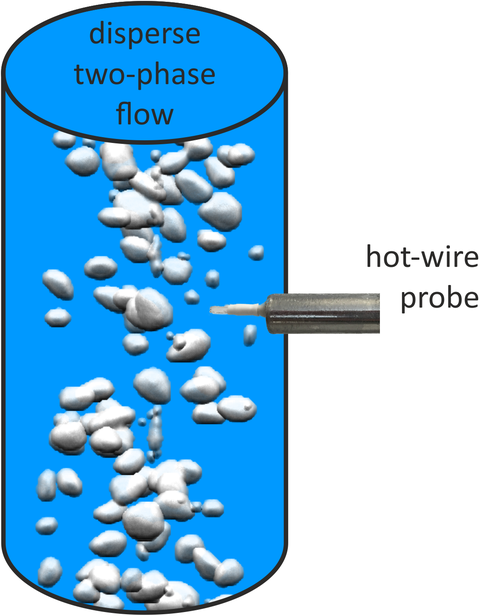Investigation of dispersed two-phase flows in complex geometries – Development of methods and experiments
Motivation:
The general aim of this project is to improve the methodological basis for the further development of CFD codes to calculate three-dimensional two-phase flows in the cooling circuit of nuclear power plants. For this purpose two modern methods for measuring phase distribution, liquid velocity and turbulence in two-phase flows will be qualified and applied in selected experiments with a nuclear background. This methodological work is used on the one hand to improve the experimental basis for the validation of CFD codes in nuclear safety research. On the other hand valuable fundamental knowledge can be obtained through the experimental investigations. In addition, this project is a contribution to the maintenance of knowledge in nuclear safety in the field of thermal hydraulics.
Objectives:
The scope of this project is the development of a miniaturized thermal anemometer probe for determination of local liquid velocities within two-phase flows. This probe measurement technique will, together with the ultrafast X-ray tomography, be utilized for experimental investigations of three-dimensional flow structures. The achieved data serves as validation data for already existing numerical models for two-phase flow simulations.
Methods (and results):
Based on the thermal anemometer principle a novel hot-wire probe is developed and experimentally tested. This probe facilitates the simultaneous measurement of both liquid velocities and the phase indicator function. This function is highly needed for the identification of possible interactions of the disperse gas phase with the probe, which has a significant impact on the measurement signal.
Ultrafast X-ray tomography is utilized for the investigation of the bubble dynamics with a very high temporal resolution. With this, it is possible to determine the cross-sectional averaged or radial gas holdup within the measurement plane, bubble sizes and their distribution as well as bubble rise velocities and gas flow directions.
Thus, it is possible to characterize two-phase flows using the aforementioned measurement techniques simultaneously. Additionally, by specific manipulation of the cross-section of the investigated flow channel three-dimensional flows can be achieved. The experimental results are dedicated for validation and further development of existing numerical models.
Figure:
Visualization of a bubbly two-phase flow using ultrafast X-ray tomography and schematic installation position of the novel hot-wire probe.
Publications:
M. Neumann, A. Bieberle, and U. Hampel
Two-Phase Flow Studies in Complex Geometries
47th Annular Meeting on Nuclear Technology, 2016
M. Neumann, A. Bieberle, and U. Hampel
Liquid velocity determination using thermal anemometry in two - phase flows : new developments
Specialists Workshop on Advanced Instrumentation and Measurement Techniques for Nuclear Reactor Thermal Hydraulics (SWINTH) 2016, 2016

